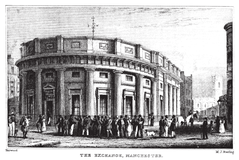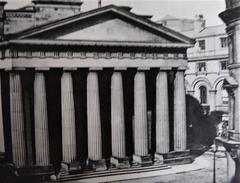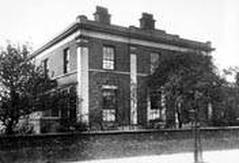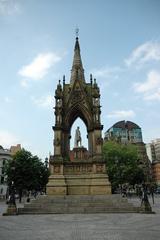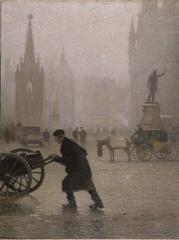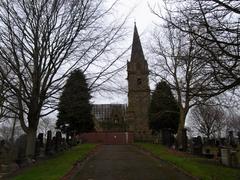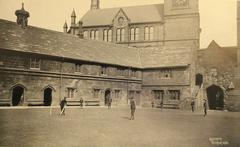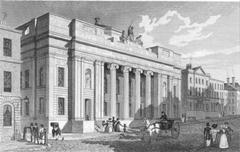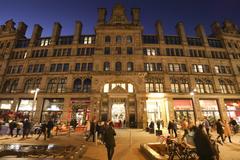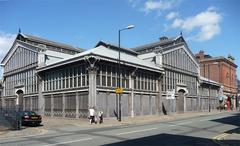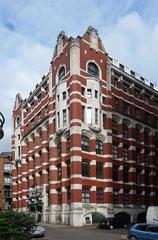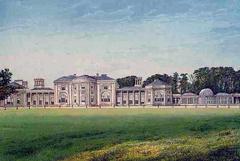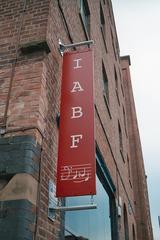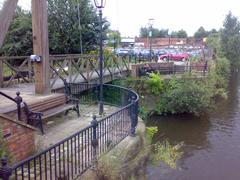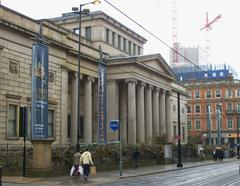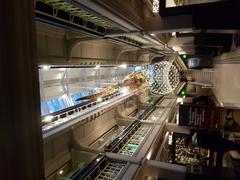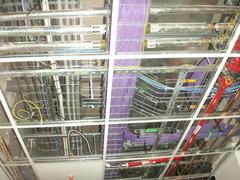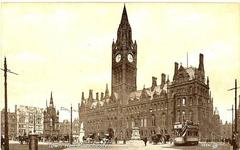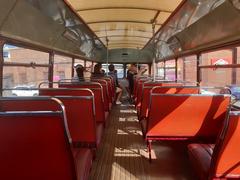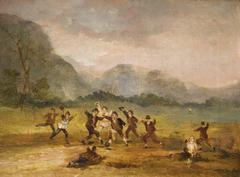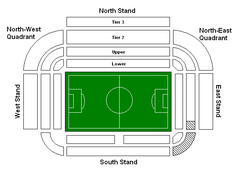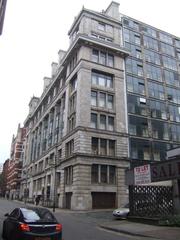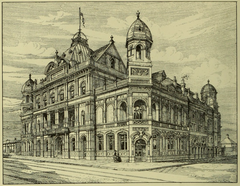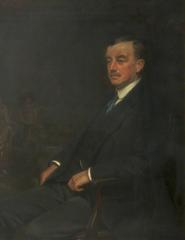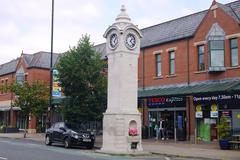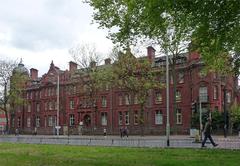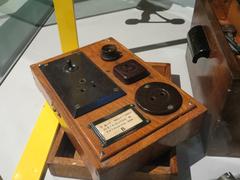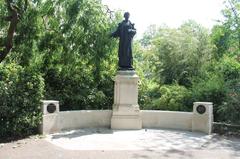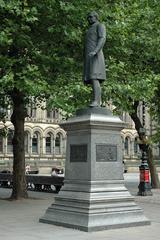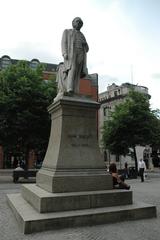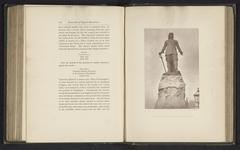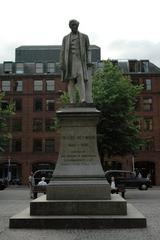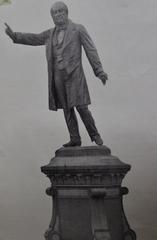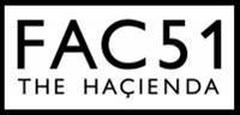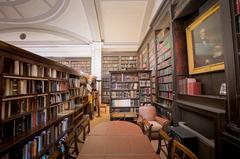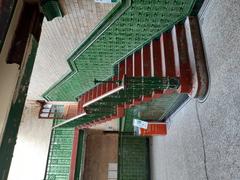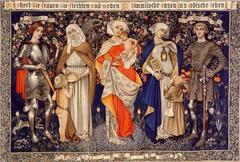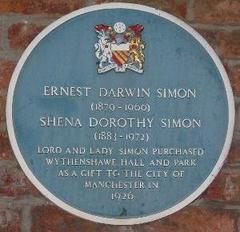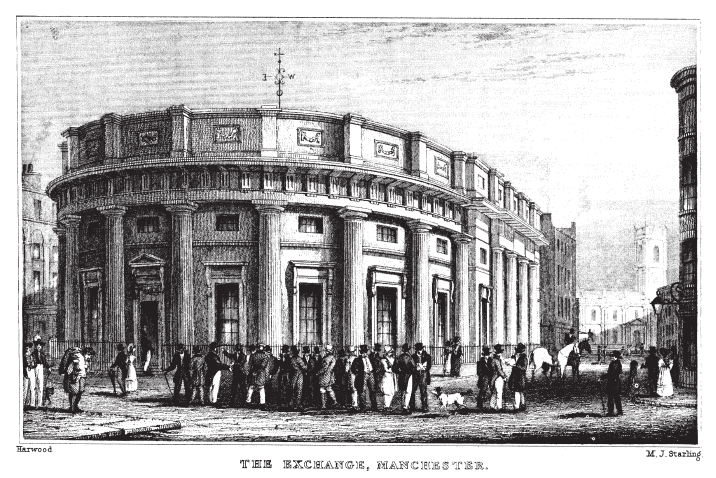
Royal Exchange Manchester Visiting Hours, Tickets, and Travel Guide
Date: 14/06/2025
Introduction to the Royal Exchange Manchester
The Royal Exchange Manchester is a landmark that encapsulates the city’s industrial legacy, architectural splendor, and vibrant cultural life. Originally established in 1729 as a hub for cotton and textile merchants, the Exchange evolved in tandem with Manchester’s emergence as “Cottonopolis,” the global center for cotton trade. The current Edwardian Baroque building, completed in the early 20th century, has withstood wartime bombings and the 1996 IRA attack, continually adapting to new roles. Today, it is home to the acclaimed Royal Exchange Theatre, celebrated for its innovative theatre-in-the-round design, and offers diverse retail, dining, and cultural experiences. This guide provides essential information on visiting hours, ticketing, accessibility, and travel tips to help you make the most of your visit to one of Manchester’s most iconic historic sites. For up-to-date details and virtual tours, consult the Royal Exchange Theatre website, as well as resources like Levitt Bernstein, Manchester Victorian Architects, and Theatre Bound.
Table of Contents
- Introduction
- Historical Overview
- Cultural and Social Significance
- Visiting the Royal Exchange Manchester
- Visitor Experience
- Frequently Asked Questions (FAQ)
- Conclusion
- References
Historical Overview
Origins and Early Development
The Royal Exchange’s origins trace back to 1729, when it was founded as a focal point for Manchester’s burgeoning textile trade. As the city’s cotton industry expanded, the Exchange was rebuilt twice during the 19th century to accommodate growing commercial activity. By the late 1800s, Manchester had become a global trading powerhouse, earning the nickname “Cottonopolis.” The current Royal Exchange building, completed in 1921, was designed to accommodate up to 11,000 traders—making its trading hall one of the largest in the world at the time (Levitt Bernstein; Manchester Victorian Architects).
Architectural Evolution
The Royal Exchange is a Grade II listed structure and a striking example of Edwardian Baroque architecture. Its Portland and Darley Dale stone façade features grand Corinthian columns, a three-arched colonnade, and intricate stonework. The interior is dominated by the vast Great Hall, illuminated by a central glass dome and framed by galleries and arcades. The roofscape is punctuated by three domes, a Baroque turret, and additional domes at the corners (Manchester Victorian Architects).
The building has proved resilient, surviving significant damage during World War II and the 1996 IRA bombing—each time undergoing careful restoration. In 1976, the Royal Exchange was transformed into a theatre. Architects Levitt Bernstein designed a unique, seven-sided theatre-in-the-round suspended within the Great Hall, preserving the historic fabric while adding a dynamic new cultural function (Levitt Bernstein; Architects’ Journal).
Cultural and Social Significance
From Trade to Theatre
The Royal Exchange’s transformation from a trading floor to a leading theatre reflects Manchester’s broader evolution from industrial might to cultural innovation. The theatre’s in-the-round auditorium, seating up to 800 people, ensures no audience member is more than ten meters from the stage, fostering a uniquely intimate experience (Theatre Bound). The venue is renowned for its diverse programming, nurturing both established and emerging talent and engaging communities across Greater Manchester.
Social Hub and Urban Regeneration
Throughout its history, the Royal Exchange has been a social and commercial nucleus for Manchester. It has hosted everything from air terminal check-ins in the 1950s to nightclubs and shopping arcades, reflecting the city’s dynamic spirit (I Love Manchester). The Exchange’s presence has contributed to urban regeneration, with its retail arcade supporting independent boutiques, premium brands, and cafes (The Manc Food & Drink Guide).
Accessibility and Inclusivity
The Royal Exchange is committed to accessibility and inclusivity. Ticketing options include discounts, concessions, and “Pay What You Decide” pricing to ensure broad participation. The venue also offers captioned and audio-described performances and is fully accessible to visitors with disabilities (The Manc Reopening Programme; Royal Exchange Community).
Visiting the Royal Exchange Manchester
Visiting Hours
- Theatre and Arcade:
- Monday to Saturday: 10:00 AM – 6:00 PM (or until late on performance days)
- Sunday: 12:00 PM – 5:00 PM
- Note: Theatre performance times and special event hours may vary. Check the official website for the latest details.
Ticket Information
- Building Entry: Free access to the Royal Exchange building and shopping arcade.
- Theatre Tickets: Prices typically range from £10 to £35, with discounts for students, seniors, groups, and “Pay What You Decide” options available for select performances.
- Booking: Tickets can be purchased online, by phone, or at the box office. Advance booking is recommended, especially for popular shows and accessible seating (Royal Exchange Theatre).
Guided Tours and Special Events
- Guided Tours:
Tours focusing on the Exchange’s architecture and history are offered periodically and must be booked in advance. - Special Events:
The theatre hosts workshops, community events, and temporary exhibitions. Check the Royal Exchange website for announcements.
Accessibility
- Entrances and Facilities: Step-free access via the St Ann’s Square entrance, accessible toilets, and lifts.
- Theatre Access: Wheelchair spaces (advance booking required), hearing loops, captioned and audio-described performances.
- Assistance: Assistance dogs are welcome, and staff are trained to support visitors with additional needs.
Getting There
- Public Transport:
- 15-minute walk from Piccadilly, Oxford Road, and Victoria train stations.
- Metrolink stops: Exchange Square and St Peter’s Square.
- Multiple bus routes serve the area (TFGM).
- Car Parking:
- Q-Park Deansgate North (discount code RETDN30)
- Arndale and Manchester Arena Car Parks
- Pre-booking is advisable due to limited city-centre parking.
- Cycling/Walking:
- Public bike racks nearby, ideal for walking tours.
Nearby Attractions
- Manchester Art Gallery – Diverse collection from the 17th century to modern art.
- John Rylands Library – Neo-Gothic architectural masterpiece.
- Manchester Town Hall – Iconic civic building in Albert Square.
- St Ann’s Church and Square – Historic heart of Manchester.
- Arndale Centre – Major shopping destination.
- Dining and Nightlife – Numerous restaurants, pubs, and cafes within walking distance.
Visitor Experience
Exploring the Royal Exchange
- Great Hall: Marvel at the soaring columns, glass dome, and suspended theatre-in-the-round.
- Retail Arcade: Browse independent boutiques and well-known brands.
- Food and Drink: The Rivals Bar & Café offers pre-theatre dining; many other options are available nearby.
- Photography: Capture the building’s unique architectural features before and after shows (photography is not permitted during performances).
Theatre Highlights
- Notable Productions: The Royal Exchange has hosted acclaimed performers and innovative productions, cementing its reputation as a leading UK theatre.
- Community Outreach: Initiatives like the “Local Exchange” program bring theatre and arts engagement to neighborhoods across Greater Manchester (Royal Exchange Community).
Frequently Asked Questions (FAQ)
Q: What are the Royal Exchange Manchester visiting hours?
A: Typically Monday–Saturday, 10:00 AM–6:00 PM (later on performance nights), and Sunday, 12:00 PM–5:00 PM. Check the official website for up-to-date times.
Q: How do I buy tickets?
A: Tickets can be purchased online, by phone, or at the box office. Options include discounts and “Pay What You Decide” tickets.
Q: Is the Royal Exchange accessible?
A: Yes, the venue is fully accessible, with step-free entry, accessible facilities, and support services for visitors with disabilities.
Q: Are guided tours available?
A: Yes, guided tours are offered periodically and should be booked in advance via the official website.
Q: What attractions are nearby?
A: The John Rylands Library, Manchester Art Gallery, Manchester Town Hall, and St Ann’s Square are all within walking distance.
Conclusion
The Royal Exchange Manchester is not just an architectural marvel, but a living cultural beacon at the heart of the city. Its rich history, innovative theatre, and dynamic retail spaces offer something for everyone. Whether you are drawn by its storied past or its vibrant present, a visit to the Royal Exchange is an essential part of any exploration of Manchester’s heritage. For the latest visitor information, ticket bookings, and virtual tours, visit the Royal Exchange website.
Enhance your visit with the Audiala app, featuring curated tours and insider tips for Manchester’s top historical and cultural sites.
References and Further Reading
- Royal Exchange Theatre website
- Levitt Bernstein
- Manchester Victorian Architects
- Theatre Bound
- Greater Manchester Combined Authority
- Architects’ Journal
- I Love Manchester
- Manchester Theatres
- The Manc Food & Drink Guide
- Royal Exchange Community
- TFGM
